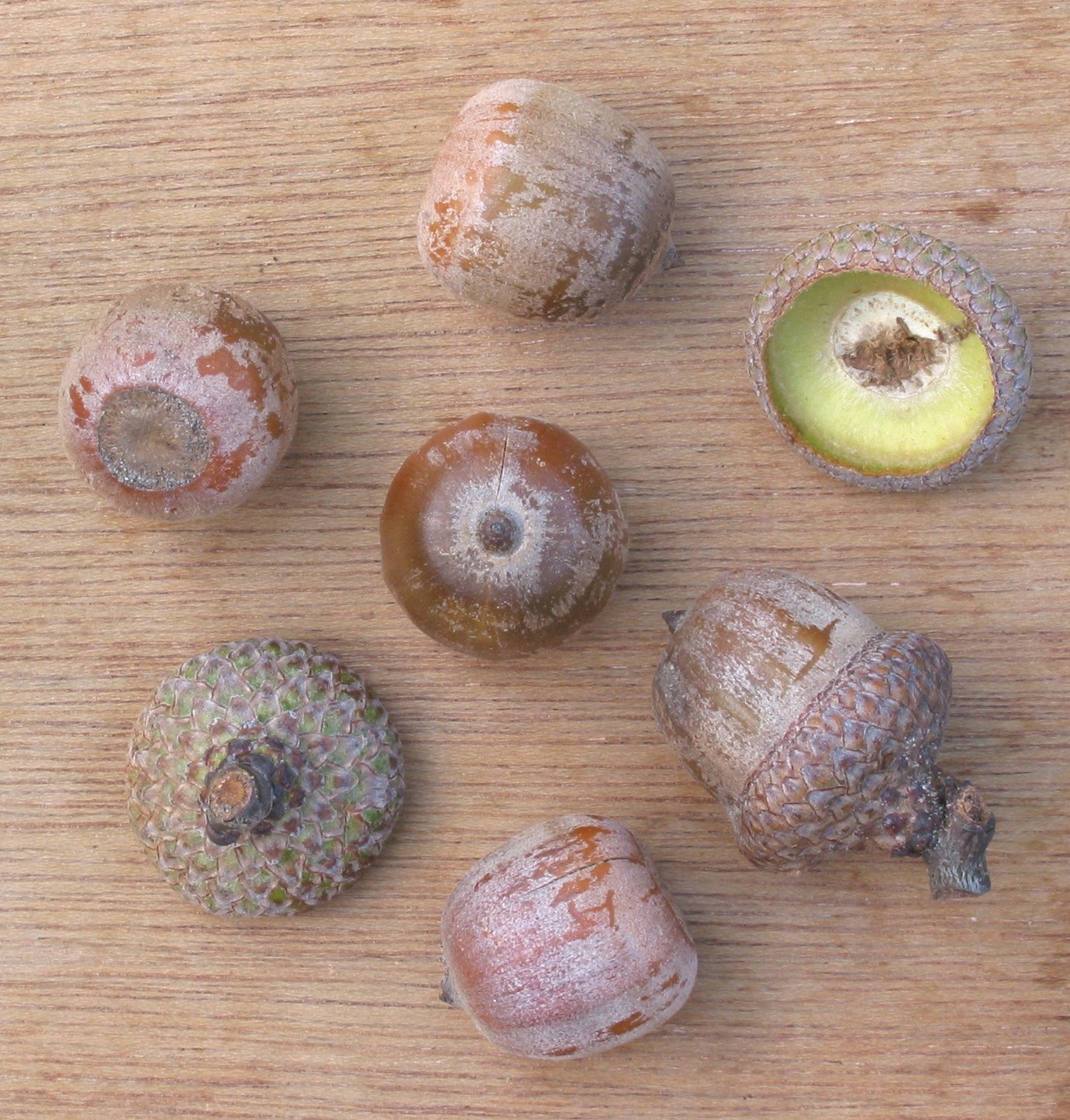Difference between revisions of "Translations:AY Honors/Edible Wild Plants/Acorn/1/es"
m (FuzzyBot moved page Translations:Adventist Youth Honors Answer Book/Edible Wild Plants/Acorn/1/es to Translations:AY Honors/Edible Wild Plants/Acorn/1/es without leaving a redirect: Part of translatable page "Adventist Youth Honors Answer Book/Edible Wild Plants/Acorn") |
Revision as of 15:34, 7 September 2021
Bellota
Descripción: Las bellotas son el fruto del árbol de roble. Ellas son una fuente de alimento muy importante para la vida silvestre. Las criaturas que hacen de las bellotas una parte importante de su dieta incluyen las aves como los arrendajos, palomas, algunos patos y varias especies de pájaros carpinteros. Los pequeños mamíferos que se alimentan de las bellotas incluyen ratones, ardillas y otros roedores. Los grandes mamíferos como los cerdos, osos y ciervos también consumen grandes cantidades de bellotas; pueden constituir hasta el 25% de la dieta del ciervo en el otoño. Sin embargo, bellotas son tóxicos para otros animales, tales como caballos. En algunas culturas, bellotas una vez constituyeron un elemento básico en la dieta, a pesar de que hoy en día son sólo un alimento muy menor.
Disponibilidad: Otoño
Uso: La bellota contiene tanino, que es muy amargo y un poco tóxico. El tanino se elimina fácilmente por inmersión en agua. Las bellotas de la familia del roble blanco tienen mucho menos tanino que las bellotas de la familia del roble negro (o rojo), así que si tiene una opción, escoja por robles blancos. Las primeras bellotas que caen del árbol son susceptibles de contener gusanos y larvas de la polilla. La mayor parte de estas malas bellotas flotará en el agua, mientras que la mayoría de las buenas bellotas se hundirán. Al comienzo de la temporada de las bellotas (finales de verano o principios de otoño), la mayoría de las bellotas flotan y muy pocas se hunden. Mientras la temporada avanza, la mayoría de las bellotas se hunden y pocas flotan. Ellas se pueden abrir con un par de alicates o un cascanueces. Quite la carne del caparazón, aplaste en un polvo fino (utilice un mortero o un procesador de alimentos), y luego lo puede sumergir en agua durante aproximadamente una semana, cambiando el agua dos veces al día. Puede acelerar este proceso mediante la ebullición. Los americanos nativos ponían las bellotas machacadas en un saco y luego colocaban la bolsa en una corriente rápida durante varios días. Si después de la inmersión la papilla de bellota sigue siendo amarga, necesita remojarse. Cuando ya no están amargas, se extiende hacia fuera en una bandeja de horno y se seca en un horno a 120° C durante 90 minutos. Pueden ser utilizadas como harina o para hacer papilla de bellota - un elemento básico de la dieta indígena. También se pueden aplastar y comer como frutas secas, aunque bellotas no machacadas tomarán mucho más tiempo para filtrarse.
Template:EWP/Bake/es Template:EWP/Fry/es Template:EWP/Boil/es Template:EWP/Tree/es Template:EWP/Nut/es Template:EWP/Flour/es

